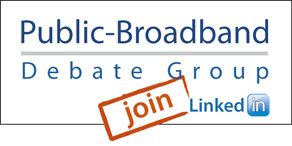Unless you have been living under a fat rock for the last couple of weeks you should probably know about Google’s announcement to build an FTTH network. If this still does not ring a bell you can read Benoit or Stephen’s take on the topic.
What has been absent from the enormous news coverage is how this network is planned to materialize.
Tim Wu from Columbia University and Derek Slater from Google Inc. published more than a year ago a paper on a revolutionary business model for FTTH roll-out based on the relinquishment of network ownership to the end users. In a nutshell the authors propose a condominium type of onwership where each houwehold will own a fiber strand and part of the cable up to an intermediate or end aggregation point (possibly at the CO). The business model has been called “Homes with Tails” published at Social Science Research Network.
The condominium type of ownership is the dominant type of estate ownership in Greece so these ideas are fairly understandable here. Nevertheless, there are several operational details needed to work out and the announcement make me thing that Google has already come up with some answers in that respect too.
So, while we are waiting for further details from the software (should we start calling it telecom) giant, and with a humorous intention take a look at the (hypothetical) Google’s PON. Now, that is what I’d call really big news!


